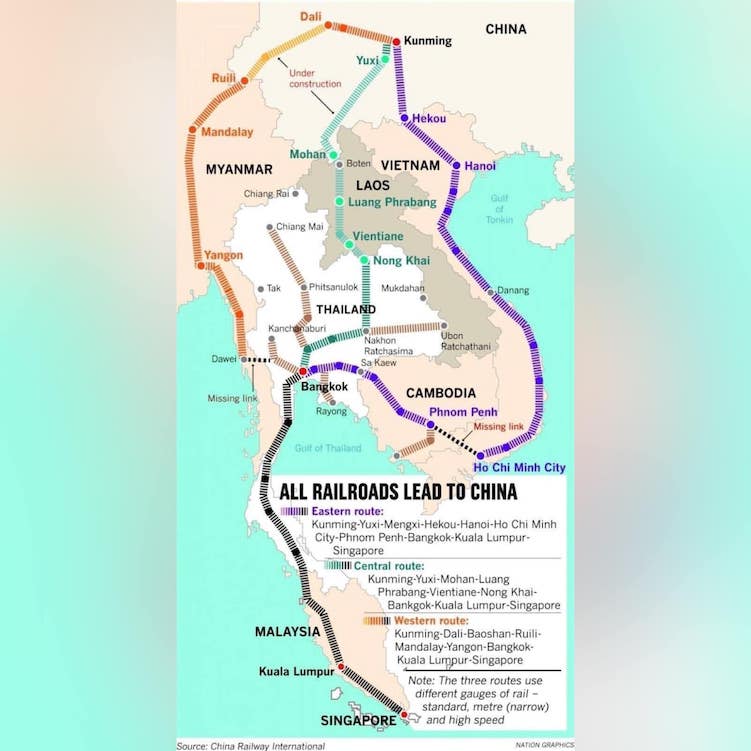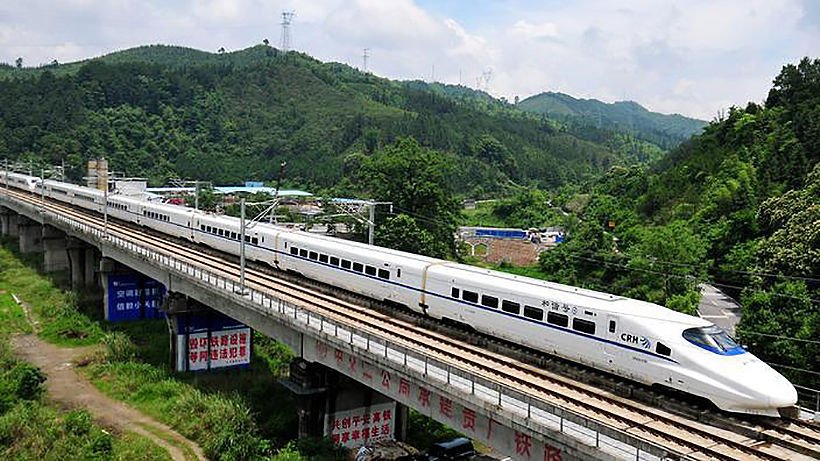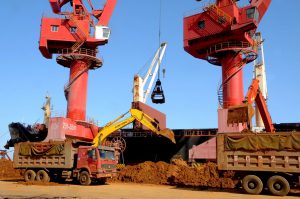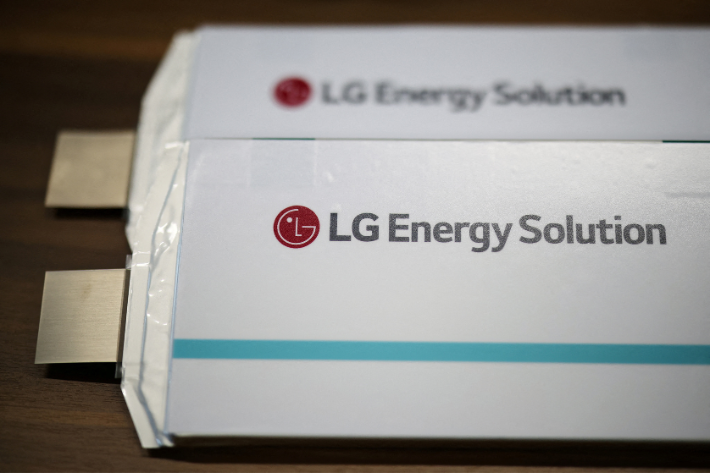Officials from China and Vietnam are discussing a possible major upgrade of their underdeveloped rail links, including an historic line built in the colonial era over a century ago.
The talks are part of preparations for a visit to Hanoi in coming weeks by Chinese President Xi Jinping, officials and diplomats said, which would confirm Vietnam’s increasingly strategic role in global supply chains as major powers such as the United States vie to gain influence there.
Vietnamese Prime Minister Pham Minh Chinh issued a statement last month that called for an upgrade of the rail line from Kunming in southern China to Vietnam’s port city of Haiphong.
The PM’s call may have been spurred by the success of a high-speed rail link from Kunming to Vientiane, which has greatly boosted trade and tourism in land-locked Laos and has led to Thailand speeding up work on its long-delayed high-speed link from Vientiane, across the Mekong to Nong Khai and down to Bangkok.
ALSO SEE: China Investment Curbs May Not be Part of Key US Defence Bill
But officials say another facet of an upgraded China-Vietnam rail link is because it would cross Vietnam’s rare earths heartland and reach the country’s top port in the north.
Deeper trade ties and railways connections were expected to be discussed on Friday when China’s top diplomat Wang Yi meets Vietnam’s Deputy Prime Minister Tran Luu Quang in Hanoi, diplomats said.
The arrival of Wang Yi follows a visit by China’s Commerce Minister Wang Wentao last month, and a delegation of US business leaders who arrived in Hanoi in September with US President Joe Biden.
Chinese officials have stressed the importance of boosting infrastructure connectivity with Hanoi and many of their other southern neighbours – Laos, Thailand and Myanmar (although plans for a rail link from Yunnan to the Andaman Sea has been held up by fighting in Myanmar’s civil war).
Vietnam already has rail connections to China, but the 855km (531 mile) link is old – built by the French in the early 1900s – and has limited capacity on the Vietnam side.
The two systems are also not interoperable at the moment, meaning trains have to stop at the border where passengers and goods are transferred to domestic services.

Large deposits of rare earths
The upgraded railway would pass through the region where Vietnam has its largest deposits of rare earths, of which China is by far the world’s biggest refiner.
Vietnam is trying to build its own industry in what is seen as a possible challenge to China’s dominance, but what appear as internal fights have cast a shadow over these efforts.
Chinese and Vietnamese rare earths industry experts last week discussed stronger cooperation on processing the minerals, according to Vietnamese state media.
It is unclear how much China would contribute to the upgraded railway track in Vietnam and whether Hanoi would accept sizeable financing from Beijing on this.
The line could be seen as part of China’s flagship Belt and Road Initiative (BRI) which is supporting infrastructure investment across the world, but is not clear whether it would be labelled as a BRI project, one diplomat said.
A strengthened railway link could also boost Vietnam’s export to China, mostly of agriculture products, boost Chinese tourism to northern Vietnam and further integrate the two countries’ manufacturing industries, which experts already consider as symbiotic, with factories in Vietnam largely assembling components produced in China.
China is Vietnam’s largest trading partner and so far this year is also the main investor, taking into account investment from Hong Kong, as many Chinese companies move south some of their operations amid trade tensions between Beijing and Washington.
Despite the booming economic links, the two communist nations are embroiled in a years-long maritime dispute in the South China Sea and fought a brief war in the late 70s, China’s latest.
- Reuters with additional inputs and editing by Jim Pollard
ALSO SEE:
Vietnam Arrests Top Rare Earth Execs Amid Plans to Rival China
China Curbs Export of Key EV Metal as Tech War With US Deepens
Vietnam to Restart Giant Rare Earths Mine in Bid to Rival China
Rare Earth Magnet Firms Plan Vietnam Plants as China Hedge
Chip Plants, AI, Boeing Deals Agreed at US-Vietnam Meetings
Western Firms Struggling to Break China’s Grip on Rare Earths
























